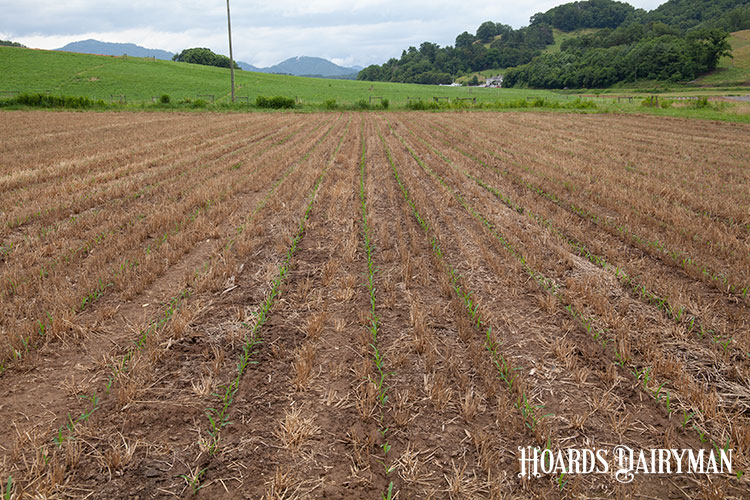
The corn planting season will start soon in most regions of the U.S. This means it is time for planning our silage replenishment strategies. Raising corn planting population is a strategy that can improve dry matter yields without affecting corn silage quality. Following, I present some information of what to expect when implementing this plan.
In general terms, when the growing conditions are adequate (fertile soil, soil with adequate water-holding capacity, and abundant rainfall), it is likely that increasing corn planting population will result in greater dry matter yields. For example, one on-farm study reported a 38% to 45% boost in dry matter yield when corn planting population was stepped up from 24,000 plants per acre to 36,000 plants per acre. Another on-farm study reported a 31% rise in dry matter yield when corn planting population was increased from 22,000 plants per acre to 40,000 plants per acre. In both experiments, the concentrations of fiber and starch and the digestibility of the fiber did not change, or only changed minimally. It is worth mentioning, however, that the greater yield was not observed in other trials.
Lighter plants
An interesting observation from our studies is that plant weight declined when corn planting population rose. One reason for these lighter plants was the reduced number of kernels observed per ear. In one study, the number of kernels per ear was 23% less for corn plants seeded at 40,000 plants per acre than for those planted at 22,000 plants per acre. In another study, the number of kernels per ear was 8% less for corn planted at 36,000 plants per acre than for ones seeded at 24,000 plants per acre.
Because fewer kernels are present, most readers might speculate that starch concentration would drop with a higher corn planting population. However, this is not necessarily true. The reason for this is that the stem width is also reduced when planting population increases. Therefore, even though the grain component is reduced, the stover component is reduced as well.
Let’s put some economic perspective into this practice. If we consider a $300 bag of seed containing 80,000 seeds per bag, raising corn planting population by 6,000 plants per acre would add $22.50 per acre to the cost of the silage. If the price of corn silage is $45 per ton (as fed basis), then 2 tons per acre of extra silage or 0.7 tons per acre of extra dry matter are needed to break even. This yield is quite possible based on the existing data.
In summary, a higher corn planting population can result in greater dry matter yields. This could be an interesting practice when farmers are in need of replenishing their silage inventories, when they have optimal cropping conditions, or when both of those things occur. However, does this practice have some risk associated? Absolutely — mainly the risk of spending extra money on seed without getting that additional dry matter yield.








